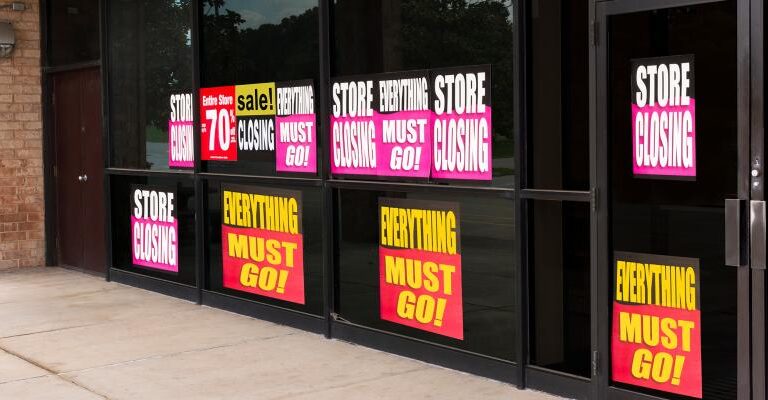Terms are becoming more stringent on the financing deals that are closing amid the COVID-19 crisis.
Bendix Anderson | Oct 12, 2020
Amid the broader challenges facing the commercial real estate market, many investors who own smaller apartment buildings are struggling to find financing in the current climate.
Many of the banks these sorts of investors rely on to finance deals have become more cautious in the pandemic—especially because smaller apartment buildings are more likely than larger properties to have residents hurt by the crisis that are falling behind in rent. Facing potential distress on existing loans, some banks are lowering origination volumes and hesitating to make new loans. Meanwhile, for the deals that are getting done, terms are becoming more stringent.
“They are cautious… They make the loan-to-value ratio much lower,” says Richard Katzenstein, senior vice president and national director of Marcus & Millichap Capital Corp., working in the firm’s offices in New York City.
Some owners of small properties work with lenders that offer programs like Freddie Mac’s Small Balance Loan program, or CMBS lenders—but all multifamily lenders are being extra careful in the crisis.
Local banks still lead with small balance loans
Community banks remain the most important source of financing for apartment investors with tiny portfolios. These apartment companies also tend to own smaller buildings and rely on the same bank they use for everyday financial needs to also arrange small balance apartment loans.
Overall, banks, thrifts and credit unions provide a third ($124.1 billion) of the $364 billion of multifamily mortgages originated in 2019. The size of their average apartment loan was just $2.7 million, according to the Mortgage Bankers Association. Commercial banks remain the biggest players.
“Their loans generally have more flexibility, are easier to obtain and are often based on a long-term relationship, versus only property performance,” says George Tikijian, executive managing director for the Cushman & Wakefield’s multifamily advisory group, working from the firm’s offices in Indianapolis.
But close to one-third of the banks that usually provide small balance loans to apartment properties have pulled back on making loans in the chaos caused by the coronavirus, estimates Katzenstein. That leaves more than two-thirds of banks that are still making loans— however some borrowers may not be able to use the bank they usually depend on for financing.
The apartment investors who tend to take out small loans may be especially vulnerable in the crisis caused by the coronavirus. Properties with just two-to-four apartments are more likely to be home to lower-income renters, who are in turn more likely to have lost jobs in the crisis caused by the coronavirus, according to research by the Urban Institute, a nonprofit research organization based in Washington, D.C.
“Small buildings with one to four units are doing the worst,” confirms David Dworkin, president and CEO of the National Housing Conference, based in Washington, D.C. “The renters have lower incomes, and the landlords have fewer resources.”
In a building with just four apartments, if one household cannot pay their rent, then suddenly the property has an economic vacancy rate of 25 percent. Renters who have lost income in the crisis are now protected by a federal moratorium on evictions. On September 4, 2020, the federal Centers for Disease Control and Prevention issued a new order that protects renters from eviction through the end of 2020. Meanwhile, gridlock among players in Washington has stood in the way of new COVID-19 fiscal rescue package despite many CARES Act provisions having expired at the end of July.
Eviction moratoriums also do nothing to protect property owners, who are expected to keep making mortgage payments even if some residents have lost their jobs and are unable to pay some or all of their rent. “These eviction moratoriums are just kicking the can down the road,” says Katzenstein.
These problems have made many banks more cautious. “They want to see how collections turn out, and what happens with values,” says Katzenstein.
If the bank that an apartment borrower usually relies on is not making apartment deals during the pandemic, the borrower may have to look further afield. A mortgage broker could provide an array of choices, allowing the borrower to compare rates and terms, says Katzenstein.
Banks also require an established relationship with the borrower—that often means a business relationship. “That can involve operating accounts, treasury management, escrow accounts, etc.,” says Cushman’s Tikijian.
Freddie Mac’s Small Balance Loan Program is also still making loans. Borrowers that need small balance financing may also take out CMBS loans. These loans typically cover portfolios with 50 apartments or more.
Lenders offer less leverage in pandemic
The banks now typically provide permanent, small balance loans that cover 65 percent of the value of an apartment property—often with a personal guarantee from the borrower. That is a lower than the loans they made before the pandemic, which often covered 75 percent of the value of a property.
Lenders also offer higher interest rates to small balance loans than they offer to larger loans. “Those loans are pretty consistently in the 2.5 percent range,” says Katzenstein.
Bank lenders offer five-year small balance loans with interest rates of roughly 3.25 percent to 3.5 percent, seven-year loans with interest rates of 3.6 percent to 3.75 percent. Banks even sometimes offer 10-year loans with interest rates of 3.8 percent to 4.25 percent, Katzenstein.
These interest rates offered by banks are “comparable” with those offered by programs like Freddie Mac’s Small Balance Loan Program, says Katzenstein. A Freddie Mac lender might offer five-year small balance loans with interest rates of 3.28 percent to 3.45 percent, seven-year loans with interest rates of 3.55 percent to 3.7 percent and ten-year loans with interest rates of 3.48 to 3.53 percent.
Agency lending program can also offer loans with exceptionally long terms—even as long as 15 years. “With very low long-term interest rates, 10-year to 15-year interest rate locks are awfully tempting,” says Tikijian. “That is harder to obtain from a bank than from Freddie and Fannie. However, banks do have interest rate hedges available to accomplish longer term rate locks.”






